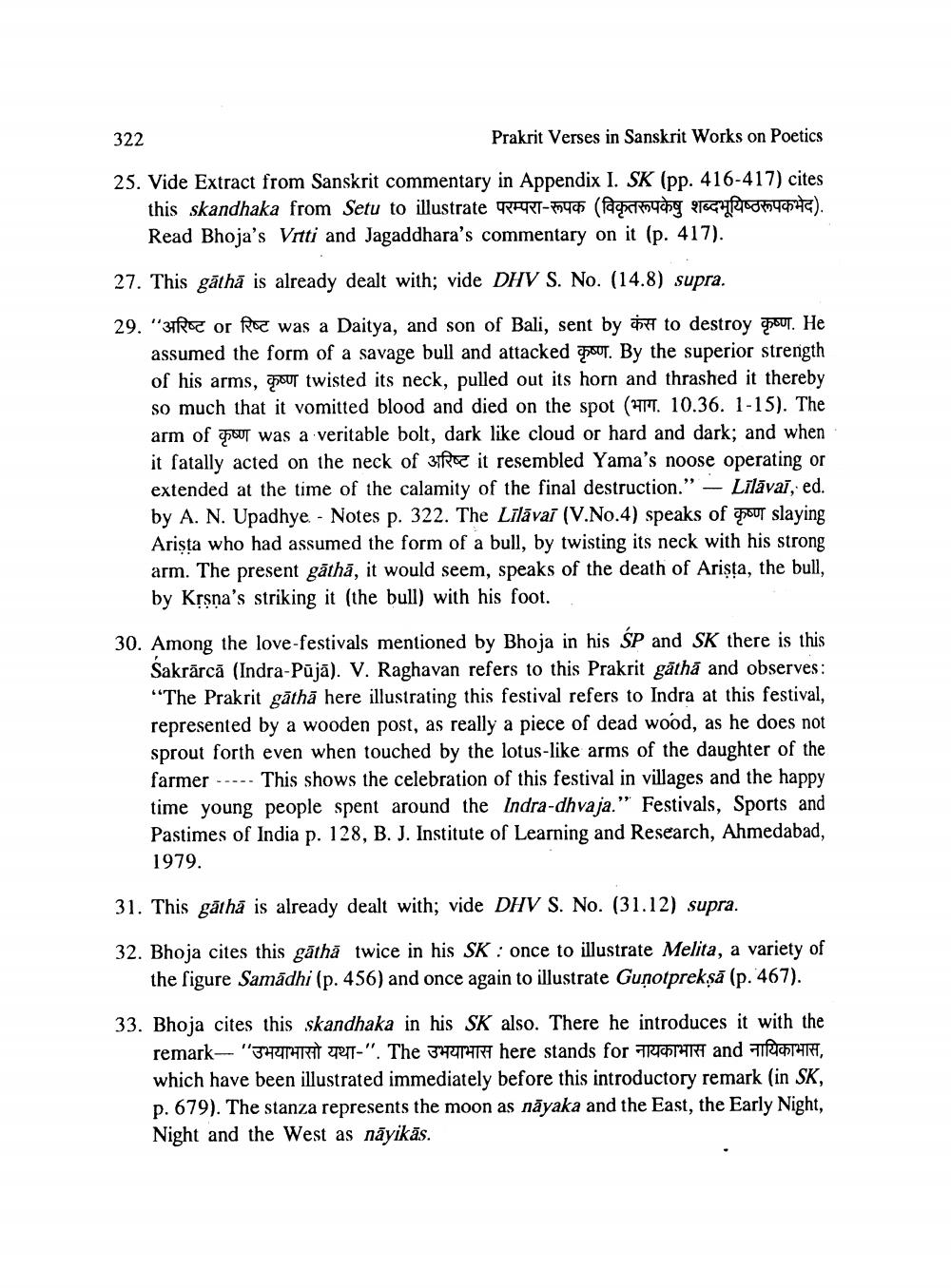________________
322
Prakrit Verses in Sanskrit Works on Poetics
25. Vide Extract from Sanskrit commentary in Appendix I. SK (pp. 416-417) cites
this skandhaka from Setu to illustrate PART-4ch (fagociado gregofood4575). Read Bhoja's Vrtti and Jagaddhara's commentary on it (p. 417).
27. This gātha is already dealt with; vide DHV S. No. (14.8) supra.
29. "31 RoC or Roc was a Daitya, and son of Bali, sent by a to destroy ghout. He
assumed the form of a savage bull and attacked shoot. By the superior strength of his arms, about twisted its neck, pulled out its horn and thrashed it thereby so much that it vomitted blood and died on the spot (M. 10.36. 1-15). The arm of your was a veritable bolt, dark like cloud or hard and dark; and when it fatally acted on the neck of 3tree it resembled Yama's noose operating or extended at the time of the calamity of the final destruction." - Līlāvai, ed. by A. N. Upadhye - Notes p. 322. The Līlāvai (V.No.4) speaks of ghout slaying Arista who had assumed the form of a bull, by twisting its neck with his strong arm. The present gāthā, it would seem, speaks of the death of Arista, the bull, by Krsna's striking it (the bull) with his foot.
30. Among the love-festivals mentioned by Bhoja in his ŚP and SK there is this
Sakrārcă (Indra-Pūjā). V. Raghavan refers to this Prakrit gātha and observes: “The Prakrit gāthā here illustrating this festival refers to Indra at this festival, represented by a wooden post, as really a piece of dead wood, as he does not sprout forth even when touched by the lotus-like arms of the daughter of the farmer ---- This shows the celebration of this festival in villages and the happy time young people spent around the Indra-dhvaja." Festivals, Sports and Pastimes of India p. 128, B. J. Institute of Learning and Research, Ahmedabad, 1979.
31. This gātha is already dealt with; vide DHV S. No. (31.12) supra.
32. Bhoja cites this gāthă twice in his SK : once to illustrate Melita, a variety of
the figure Samādhi (p. 456) and once again to illustrate Gunotpreksā (p. 467).
33. Bhoja cites this skandhaka in his SK also. There he introduces it with the
remark- "उभयाभासो यथा-". The उभयाभास here stands for नायकाभास and नायिकाभास, which have been illustrated immediately before this introductory remark (in SK, p. 679). The stanza represents the moon as nāyaka and the East, the Early Night, Night and the West as nāyikās.




